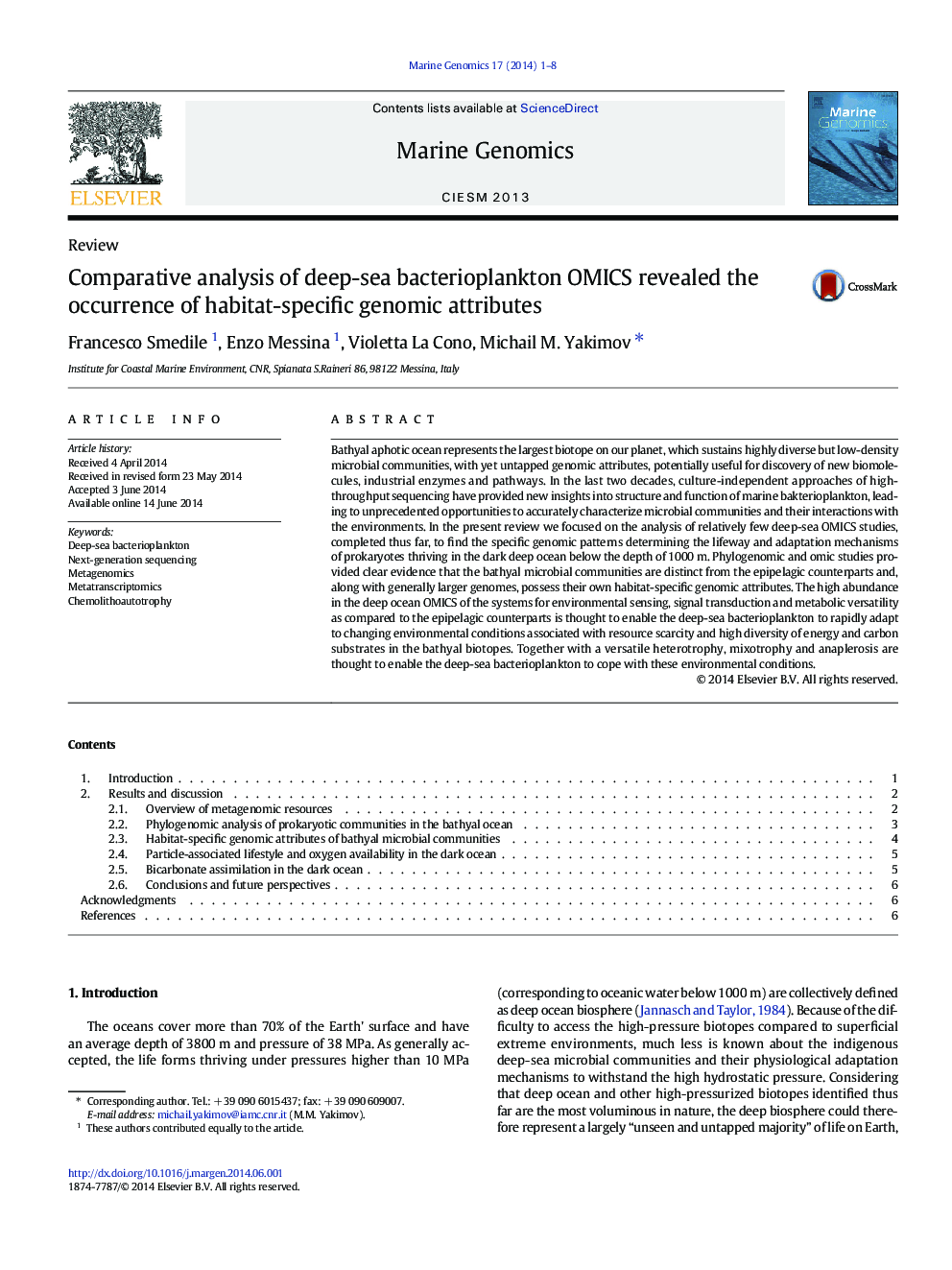| Article ID | Journal | Published Year | Pages | File Type |
|---|---|---|---|---|
| 2058161 | Marine Genomics | 2014 | 8 Pages |
Bathyal aphotic ocean represents the largest biotope on our planet, which sustains highly diverse but low-density microbial communities, with yet untapped genomic attributes, potentially useful for discovery of new biomolecules, industrial enzymes and pathways. In the last two decades, culture-independent approaches of high-throughput sequencing have provided new insights into structure and function of marine bakterioplankton, leading to unprecedented opportunities to accurately characterize microbial communities and their interactions with the environments. In the present review we focused on the analysis of relatively few deep-sea OMICS studies, completed thus far, to find the specific genomic patterns determining the lifeway and adaptation mechanisms of prokaryotes thriving in the dark deep ocean below the depth of 1000 m. Phylogenomic and omic studies provided clear evidence that the bathyal microbial communities are distinct from the epipelagic counterparts and, along with generally larger genomes, possess their own habitat-specific genomic attributes. The high abundance in the deep ocean OMICS of the systems for environmental sensing, signal transduction and metabolic versatility as compared to the epipelagic counterparts is thought to enable the deep-sea bacterioplankton to rapidly adapt to changing environmental conditions associated with resource scarcity and high diversity of energy and carbon substrates in the bathyal biotopes. Together with a versatile heterotrophy, mixotrophy and anaplerosis are thought to enable the deep-sea bacterioplankton to cope with these environmental conditions.
